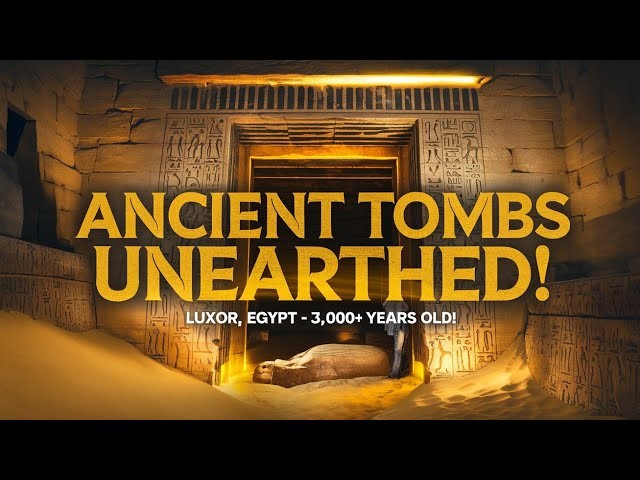Three Ancient Tombs Unearthed in Luxor, Egypt: A Significant Archaeological Discovery
Three Ancient Tombs Unearthed in Luxor, Egypt: A Significant Archaeological Discovery
Why in the News?
Egyptian archaeologists have made a remarkable archaeological discovery, unearthing three ancient tombs in Luxor, formerly known as Thebes, belonging to prominent New Kingdom officials in the Dra Abu al-Naga necropolis. This find, located near the famous Valley of the Kings and Valley of the Queens, offers fresh insights into Egypt’s 18th Dynasty administration and comes ahead of the Grand Egyptian Museum’s opening, boosting archaeological research and Egypt tourism prospects. The discovery sheds light on the intricate Egypt structure of ancient tombs and their significance in Egyptian culture.
Key Archaeological Discoveries:
- The three New Kingdom tombs belong to senior statesmen from the New Kingdom period (1550–1070 BCE), a time when the King of Egypt pharaoh held supreme power.
- Discovered at the Dra Abu al-Naga necropolis in Luxor, situated along the Nile River location, these tombs include detailed Egyptian hieroglyphs and intricate Egypt wall paintings.
- Tomb 1: Belonged to Amun-em-Ipet, a Ramesside-era official working in the Temple of Amun-Ra, the principal God of Egypt.
- Tomb 2: Belonged to Baki, a grain silo supervisor during the 18th Dynasty, providing insights into the ancient Egyptian economy.
- Tomb 3: Belonged to an official identified as “S”, who was a temple supervisor, scribe, and mayor of the northern oases.
- Each tomb contains courtyards, halls, chambers, and burial wells, though many remain incomplete or damaged. These courtyard tombs feature offering scenes and depictions of funeral processions, typical of New Kingdom tombs and incorporating various pyramid elements in their design.
Cultural and Historical Significance
- Funerary inscriptions help identify tomb owners’ roles and titles, enriching our understanding of New Kingdom governance and the importance of the Egypt god Amun-Ra in ancient Egyptian religion.
- Artefacts and statues were found alongside the tombs, adding to Egypt’s rich collection of historical treasures, including exquisite Egyptian jewellery.
- The discovery reflects advanced funerary architecture and religious customs of the time, showcasing the sophistication of ancient Egyptian style and the complexity of Egypt structure in tomb design.
- These findings aid in reconstructing socio-political hierarchies of ancient Egypt and provide valuable information about the ancient Egyptian economy during the Ramesside period.
Broader Implications and Recent Finds
- The discovery is timed with the anticipated Grand Egyptian Museum opening, set to showcase over 100,000 artefacts including treasures from the Giza Pyramids and potentially items from famous rulers like Cleopatra tomb artifacts.
- Officials from the Egyptian Ministry of Tourism and Antiquities term it a major archaeological milestone, enhancing Egypt’s cultural tourism potential and adding to the country’s impressive list of Egyptian landmarks.
- This discovery follows recent finds near Queen Hatshepsut’s temple and the South Asasif necropolis, revealing sealed Middle Kingdom burials and providing insights into the reign of this powerful Egyptian queen.
- The ongoing excavations in Luxor, including the nearby Karnak Temple Complex, continue to uncover new aspects of ancient Egyptian civilization, from royal tombs to non-royal burials, and even shed light on ancient Egypt festivals through hieroglyphic inscriptions.
This significant archaeological discovery of ancient tombs Luxor not only sheds light on the lives of ancient Egyptian officials but also contributes to our understanding of New Kingdom Egypt. As excavations continue, these tombs promise to reveal more about the rich history and culture of this fascinating civilization, further cementing Luxor’s status as a premier destination for Egypt tourism and archaeological research. The intricate Egypt wall paintings and funerary inscriptions found within these tombs continue to captivate both scholars and visitors, offering a glimpse into the complex religious and social structures of ancient Egypt.






